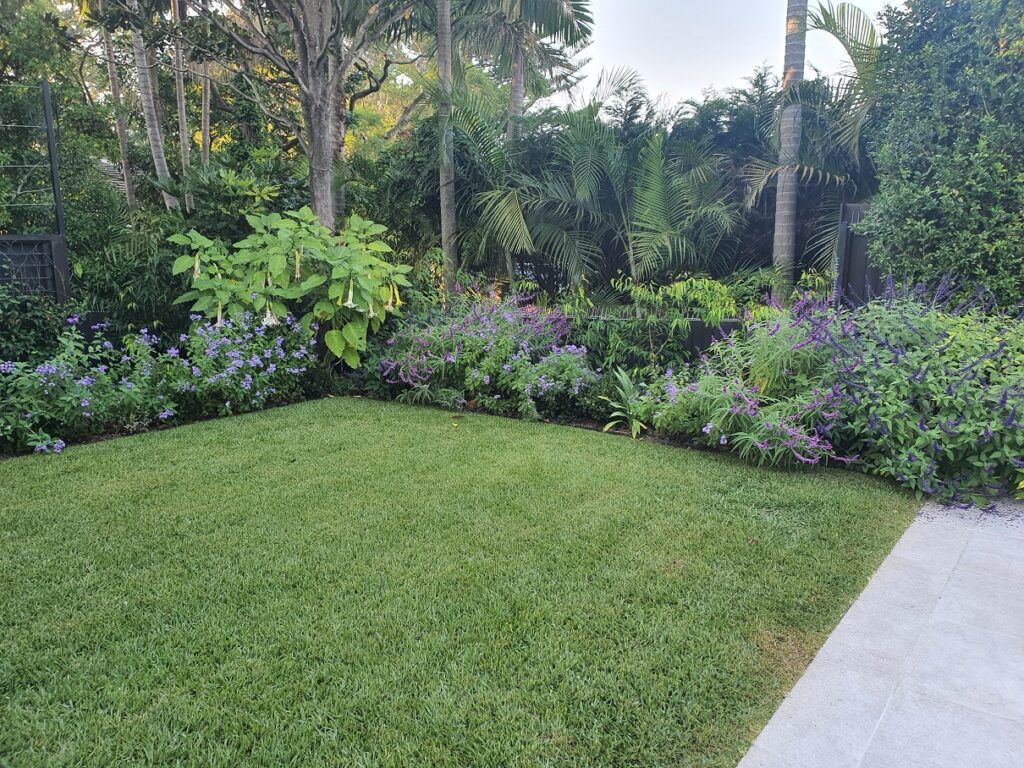
03 Mar Things to consider before you design your garden
Here are some of the key points you should consider before you start designing your home garden.
Take the Time to Plan
A successful garden starts with a plan or a sketch of your outdoor space. Having a base plan or mud map of your garden will then allow you to visualise how to layout each area.
Plant Selection
Plant selection in my opinion is the most important factor to consider when designing a garden. You can have all of the hardscape elements on point but if the plants die then where is the garden?
Planting out species that are not suited to your garden location is a very costly mistake. All too often plants are chosen because they look good in a magazine, they are “on trend” or because a local “big” retailer store has them in stock (this happens way to much where plants for a tropical environment are sold in stores located in a cold climate). It is worth doing your research first before doing a plant buying trip.
Understand Light and Shade
Understanding your light levels (sun/ shade and everything in between) within the garden will assist you in selecting the correct plants for each location. Walking through your garden at different times of day and in different seasons will allow you to observe the amount of light each area receives. At a minimum in Australia I would try to know the difference between sun/shade in summer say at midday in January compared to the sun/ shade in winter say midday sun in July.
Long Term Care
Think ahead to consider the amount of garden maintenance your garden will require as it grows compared to your time availability and skill set. If you are designing your home garden it will require ongoing care unfortunately there is no such thing as a no care garden. If you don’t have the time or skill set to maintain your garden then consider whether employing someone to do this, is an option. Gardens will need regular maintenance including your pruning, weeding, mowing and fertilising. Thinking about the after care of the garden as you start to design the space will help you in the long term.
Use Both Colour and Texture
Experiment with different colours and textures to create a visually appealing garden. Consider using a mix of flowering plants, foliage with varying hues, and plants with varied textures to add depth and interest.
Gardens Will Not Remain Static
Be prepared to allow your garden to evolve and change with time as it grows.
As a gardener allow yourself to be open to the garden developing over time. As you learn more about your plants and personal preferences, you may want to make changes or additions to improve your garden’s overall design. That is totally fine. As you create/ design your home garden you may not achieve the overall design aesthetic the first so its ok to add, change, move or even remove parts of your garden.


Think About Seasonal Interest
Select plants that offer year-round interest. This can include winter-blooming plants, evergreen shrubs, deciduous trees and perennials with colourful foliage. This ensures your garden remains visually appealing throughout the seasons.
Create Functional Spaces
Designate specific areas in your garden for different activities, such as a seating area for relaxation, a dining area for entertaining, or a play zone for children. This helps create a purposeful and organized garden layout. Each area should seamlessly flow into each other. This can be achieved by using the same or similar materials throughout the space or you could repeat some of the same plants throughout each area. The repetition of materials or plants will give a cohesiveness to the space. Ideally you could have multiple functions for each space. A fire pit area in winter could be a water feature in summer. Timber benches might double as storage areas under the seat. A service court/ utility area could have a vertical growing space on its perimeter to screen out the area.
Incorporate Hardscaping To Your Garden
Hardscaping elements such as paths, patios, trellis, and fences add structure and functionality to your garden. Choose materials that complement your overall design and consider how they will blend with the natural elements.
In our garden design eBook, we cover all the different possibilities of materials for each of your landscape features.
Create Layers With Your Plants
Planting out species that vary in their mature size and shape will create interest in the garden. Height selection may be determined by the position from which you view the garden from. If the garden bed is only viewed from one side, you could layer your plants from tallest in the back to shortest in the front to provide depth. If the garden bed is viewed from all sides, you could stagger their heights throughout the beds.
If you would like assistance with designing your home garden you can purchase one of our eBooks (from our website – link here ) that will give you the hands on information to know how to select plants that are suitable for your space. In our eBooks we share our knowledge from 25 + years of working as a professional in the landscape industry and our garden experiences from a lifetime of being a gardener. Alternatively, if you would like help in getting to know your garden and what plants will grow in it you can book a garden consultation with me. This can be completed onsite or virtually. We are able to prepare planting lists of species that will grow, survive and thrive in your garden.



